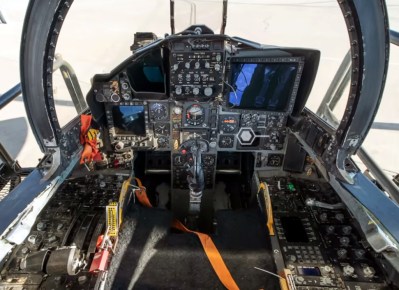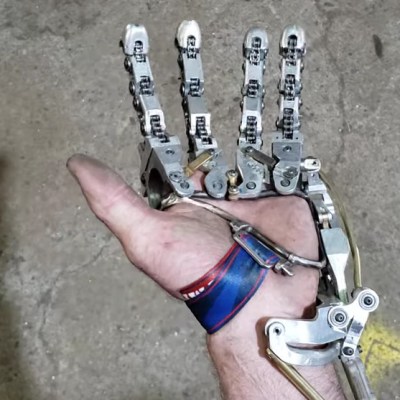A couple of weeks back, we covered an interesting method for prototyping PCBs using a modified CNC mill to 3D print solder onto a blank FR4 substrate. The video showing this process generated a lot of interest and no fewer than 20 tips to the Hackaday tips line, which continued to come in dribs and drabs this week. In a world where low-cost, fast-turn PCB fabs exist, the amount of effort that went into this method makes little sense, and readers certainly made that known in the comments section. Given that the blokes who pulled this off are gearheads with no hobby electronics background, it kind of made their approach a little more understandable, but it still left a ton of practical questions about how they pulled it off. And now a new video from the aptly named Bad Obsession Motorsports attempts to explain what went on behind the scenes.
factory tour9 Articles
Hackaday Links: November 5, 2023
As I write this, Supercon 2023 is in full swing down in Pasadena — 80 degrees and sunny at the moment, as opposed to 50 and pouring rain where I am, not that I’m bitter. Luckily, though, we can all follow along with the proceedings thanks to the livestreams on the Hackaday channel, which of course will all be available once they’re edited in case you miss anything live. There are a ton of interesting talks coming up, so there’ll be a lot to catch up on when the dust settles. And that won’t be far from now; by the time this post publishes, Supercon will be all but over, which makes it the Thanksgiving dinner of cons — all that work and it’s over in just a few minutes.
Hackaday Links: June 11, 2023
As Tom Nardi mentioned in this week’s podcast, the Northeast US is pretty apocalyptically socked in with smoke from wildfires in Canada. It’s what we here in Idaho call “August,” so we have plenty of sympathy for what they’re going through out there. People are turning to technology to ease their breathing burden, with reports that Tesla drivers are activating the “Bioweapon Defense Mode” of their car’s HVAC system. We had no idea this mode existed, honestly, and it sounds pretty cool — the cabin air system apparently shuts off outside air intake and runs the fan at full speed to keep the cabin under positive pressure, forcing particulates — or, you know, anthrax — to stay outside. We understand there’s a HEPA filter in the mix too, which probably does a nice job of cleaning up the air in the cabin. It’s a clever idea, and hats off to Tesla for including this mode, although perhaps the name is a little silly. Here’s hoping it’s not one of those subscription services that can get turned off at a moment’s notice, though.
Retrotechtacular: Gibson Factory Tour, 1967-Style
If nothing else good came out of 2020, we can say that we at least have “Instrument of the People” — some 1967-era footage of Gibson Guitars’ “craftory”, which was discovered sometime in the fall of 2020. It appears a bit boring at first — a suit slowly approaches the camera on a dimly-lit factory floor and you half-expect an ‘oh, I didn’t see you there’ type of introduction, but no. When he reaches the foreground, he finds a candy apple-red Gibson semi-hollow body guitar waiting for him. After giving the thing a quick once over, he assesses the straightness of the neck and then begins shredding on it, fingerpicking style.
If you like this or any type of guitar music, then hang on to your headstock, because it lilts nonstop throughout this 20-minute tour as we see a parade of nameless, and often headless, players showing their stuff on various styles of Gibson both electric and acoustic.
Continue reading “Retrotechtacular: Gibson Factory Tour, 1967-Style”
Commodore Promotional Film From 1984 Enhanced
Over on Retro Recipe’s YouTube channel, [Perifractic] has been busy restoring an old promotional video of how Commodore computers were made back in 1984 (video below the break). He cleaned up the old VHS-quality version that’s been around for years, translated the German to English, and trimmed some bits here and there. The result is a fascinating look into the MOS factory, Commodore’s German factory, and a few other facilities around the globe. The film shows the chip design engineers in action, wafer manufacturing, chip dicing, and some serious micro-probing of bare die. We also see PCB production, and final assembly, test and burn-in of Commodore PET and C64s in Germany.
Check out the video description, where [Perifractic] goes over the processes he used to clean up video and audio using machine learning. If restoration interests you, check out the piece we wrote about these techniques to restore old photographs last year. Are there any similar factory tour films, restored or not, lurking around the web? Let us know in the comments below.
Continue reading “Commodore Promotional Film From 1984 Enhanced”
Hackaday Links: October 3, 2021
It’s one thing to speculate about what’s happening with the Mars helicopter Ingenuity, but it’s another to get an insider’s view on recent flight problems. As we previously reported, Ingenuity is starting to face a significant challenge, as a seasonal atmospheric pressure drop on Mars threatens to make the already rarefied air too thin to generate useful lift. Mission controllers tested the chopper at higher rotor speeds, and while that worked, later attempts to fly using that higher speed resulted in an abort. The article, written by one of the NASA/JPL engineers, is a deep dive into the problem, which occurred when Ingenuity sensed excessive wiggle in two of the servos controlling the rotor swashplate. The thought is that accumulated wear in the servos and linkages might be causing the problem; after all, Ingenuity has made thirteen flights so far, greatly exceeding the five flights originally programmed for it. Here’s hoping they can adapt and keep the helicopter flying, but whatever they do, it’ll have to wait a few weeks until Mars completes its conjunction and pops back out from behind the Sun.
With all the attention understandably paid to the recent 20th anniversary of the 9/11 terror attacks, it’s easy to forget that barely a month after that day, a series of what appeared to be follow-on attacks started: the Anthrax Attacks. Members of Congress and media outlets were targeted via the mail with highly refined anthrax spores, leading to the deaths of five people, with dozens more injured and exposed to anthrax. IEEE Spectrum has an interesting article that goes into some of the technology that was rapidly deployed in an attempt to sanitize the mail, including electron beam and X-ray irradiation to kill any spores. The article also points out how this wasn’t the first time people were afraid of the mail; outbreaks of yellow fever in 1899 led to fumigation of the mail with sulfur, after perforating it with a wicked-looking paddle.
Attention PCB-design newbies — now’s your chance to learn the entire PCB design process from the ground up, with the guidance of industry professionals. TeachMePCB is back again this year, offering to teach you everything you need to know about properly laying out a PCB design in pretty much any EDA software you want. The course requires a two- to five-hour commitment every week for two months, after which you’ll have designed a PCB for a macropad using a Raspberry Pi Pico. The course facilitator is Mark Hughes from Royal Circuits, who did a great Hack Chat with us last year on PCB finishes. This seems like a great way to get up to speed on PCB design, so if you’re interested, act soon — 460 people are already signed up, and the deadline is October 10.
Some of us really love factory tours, no matter what the factory is making. All the better when the factory makes cool electronics stuff, and better still when it’s our friends at Adafruit showing us around their New York City digs. True, it’s a virtual tour, but it has pretty much become a virtual world over the last couple of years, and it’s still a great look inside the Adafruit factory. Hackaday got an in-person tour back in 2015, but we didn’t know their building used to be a Westinghouse radio factory. In fact, the whole area was once part of the famed “Radio Row” that every major city seemed to have from the 1920s to the 1960s. It’s good to get a look inside a real manufacturing operation, especially one that’s right in the heart of a city.
And finally, those with a fear of heights might want to avoid watching this fascinating film on the change-out of a TV transmitter antenna. The tower is over 1,500′ (450 m) tall, lofting an aging antenna over the flat Florida terrain. Most of the footage comes from body-mounted cameras on the riggers working the job, including the one very brave soul who climbed up the partially unbolted antenna to connect it to the Sikorsky S64 Skycrane helicopter. It’s a strange combination of a carefully planned and slowly executed ballet, punctuated by moments of frenetic activity and sheer terror. The mishap when releasing the load line after the new antenna was placed could easily have swept the whole rigging crew off the antenna, but luckily nobody was injured.
Hackaday Links: July 5, 2020
Remember all the hubbub over Betelgeuse back in February? For that matter, do you even remember February? If you do, you might recall that the red giant in Orion was steadily dimming, which some took as a portent of an impending supernova. That obviously didn’t happen, but we now seem to have an explanation for the periodic dimming: an enormous dark spot on the star. “Enormous” doesn’t begin to describe this thing, which covers 70% of the face of a star that would extend past Jupiter if it replaced the sun. The dimming was originally thought to be dust being blown off the star as it goes through its death throes, but no evidence could be found for that, while direct observations in the terahertz range showed what amounted to a reduction in surface temperature caused by the enormous star spot. We just think it’s incredibly cool that Betelgeuse is so big that we can actually observe it as a disk rather than a pinpoint of light. At least for now.


If you think you’ve seen some challenging user interfaces, wait till you get a load of the cockpit of an F-15C Eagle. As part of a new series on human interfaces, Ars Technica invited Col. Andrea Themely (USAF-ret.) to give a tour of the fighter she has over 1,100 hours on. Bearing in mind that the Eagle entered service in 1976 and has been continually updated with the latest avionics — compare the video with the steam gauges of the cockpit of an F-15A — its cockpit is still a pretty busy place. As much as possible has been done to reduce pilot load, with controls being grouped by function and the use of color-coding — don’t touch the yellow and black stuff! — and the use of tactile feedback. It’s a fascinating deep dive into a workplace that few of us ever get to see, and we’re looking forward to the rest of the series.
Sad news from Seattle, where the Living Computers: Museum + Labs is closing up shop. The announcement only says they’re closing “for now”, so there’s at least some hope that the museum will be back once the COVID-19 downturn has run its course. We hope they do bounce back; it really was a great museum with a lot of amazing hardware on display. The Vintage Computer Festival PNW was held there in its inaugural year, an event we covered and had high hopes for in the future. We hope for the best for these educational and cultural institutions, but we can’t help but fear a little for their future.
 So you suffer a partial amputation of your left hand, leaving you with only your thumb and your palm. That raises an interesting conundrum: you haven’t lost enough to replace the hand with a prosthetic one, but you still don’t have any fingers. That appears to be what happened to Ian Davis, and so he built his own partial prosthetic to replace his fingers. There’s not much backstory on his YouTube channel, but from what we can gather he has gone through several designs, most of which are myomechanical rather than myoelectric. Through a series of complex linkages, he’s able to control not only the opening and closing of the fingers, but also to splay them apart. It’s all in the wrist, as it were — his input gestures all come from flexing and extending his hand relative to his forearm, where the prosthesis is anchored. This results in a pretty powerful grip — much stronger than a myoelectric hand in a head-to-head test. And the coolness factor of his work is just off the scale. We’re looking forward to more from Ian, and hopefully enough background information for a full story on what he has accomplished.
So you suffer a partial amputation of your left hand, leaving you with only your thumb and your palm. That raises an interesting conundrum: you haven’t lost enough to replace the hand with a prosthetic one, but you still don’t have any fingers. That appears to be what happened to Ian Davis, and so he built his own partial prosthetic to replace his fingers. There’s not much backstory on his YouTube channel, but from what we can gather he has gone through several designs, most of which are myomechanical rather than myoelectric. Through a series of complex linkages, he’s able to control not only the opening and closing of the fingers, but also to splay them apart. It’s all in the wrist, as it were — his input gestures all come from flexing and extending his hand relative to his forearm, where the prosthesis is anchored. This results in a pretty powerful grip — much stronger than a myoelectric hand in a head-to-head test. And the coolness factor of his work is just off the scale. We’re looking forward to more from Ian, and hopefully enough background information for a full story on what he has accomplished.














